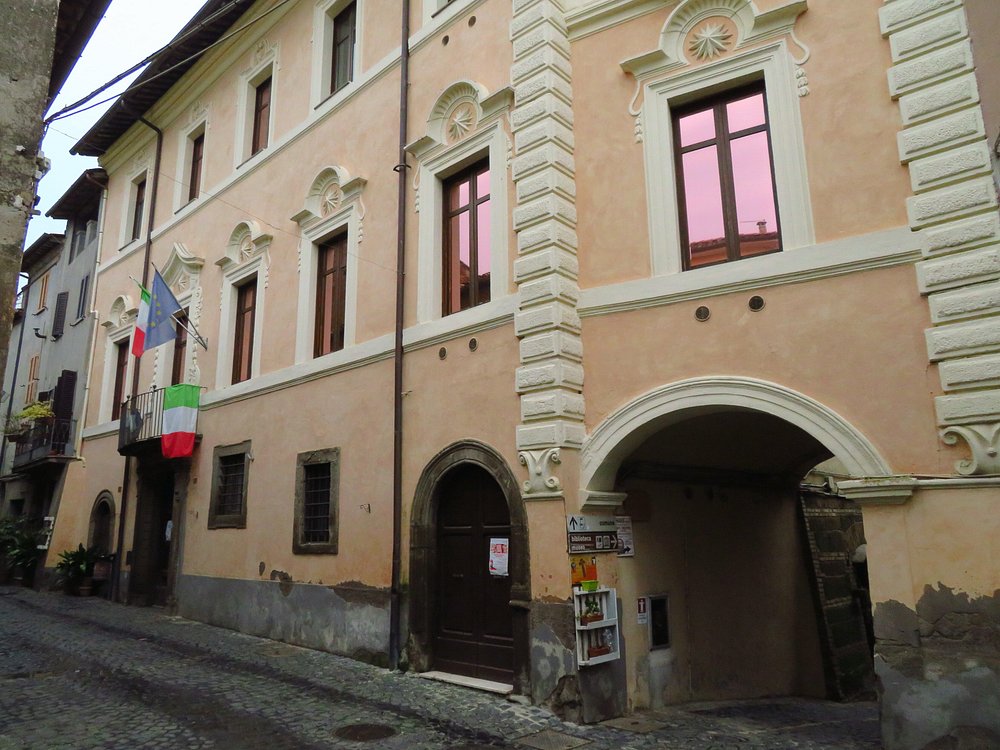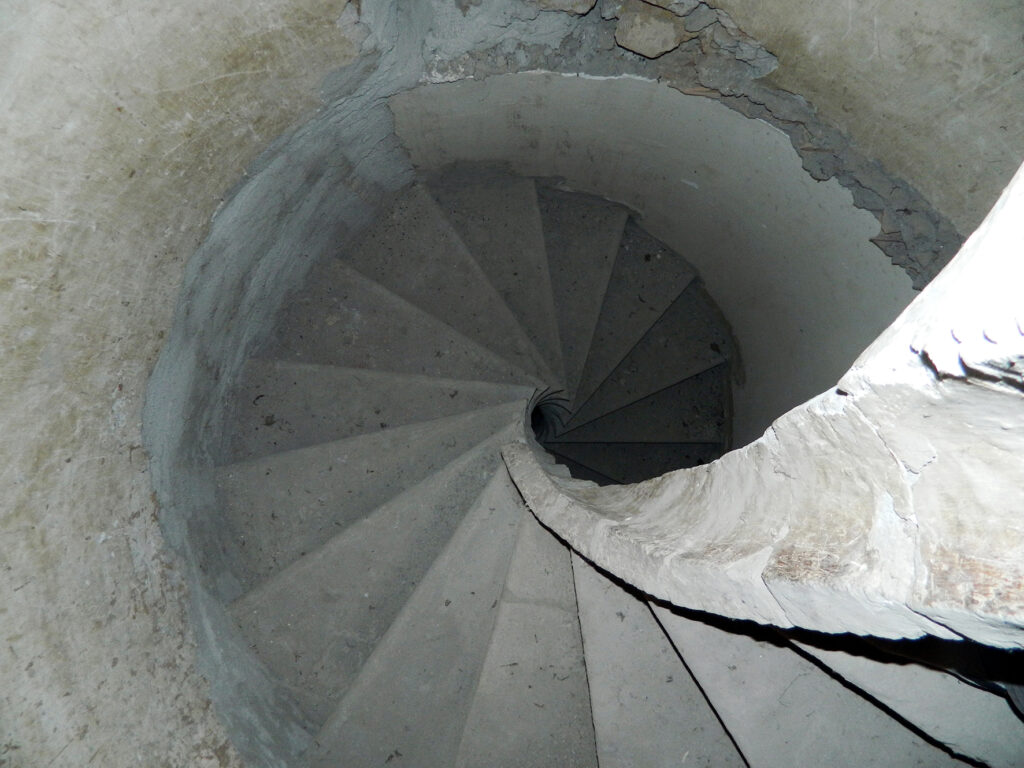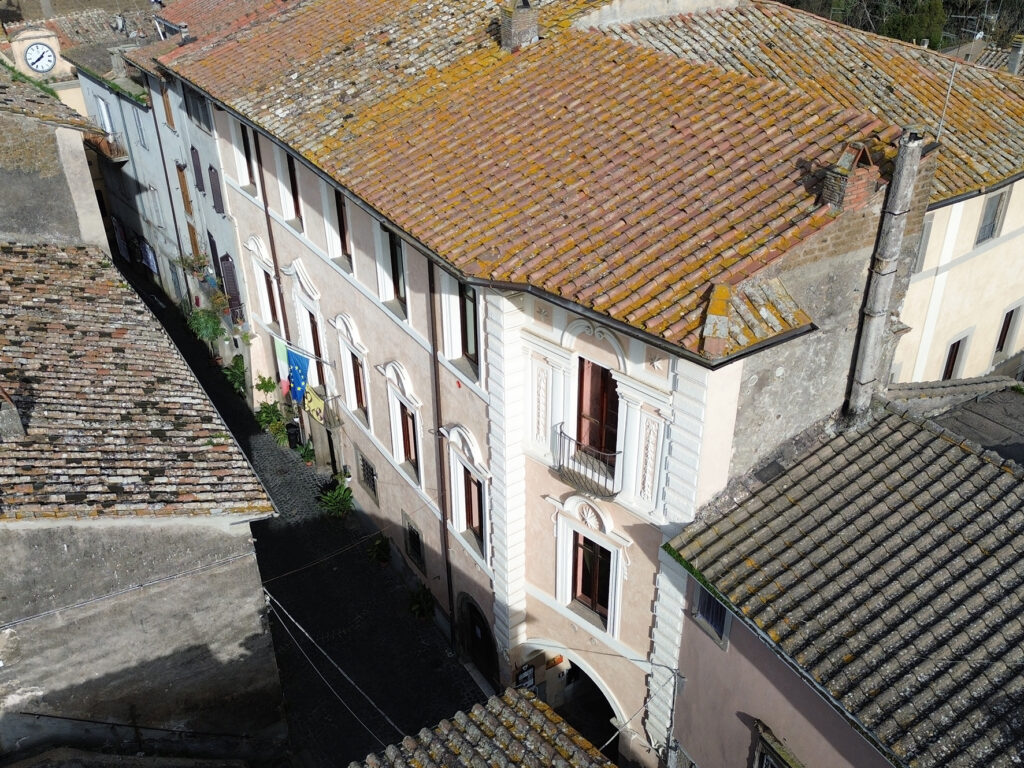Il Municio
The Municipality



Eretto nel Medioevo, l’edificio ha assunto l’attuale connotazione intorno alla metà del Seicento: è sede del Municipio dai primi del ‘900. Interessante la storia che, attraverso non poche vicissitudini, lo portò a diventare patrimonio della Comunità di Bassanello. Intorno alla metà del 19esimo secolo il palazzo era di proprietà del facoltoso Gregorio Celestini, di cui è noto solo l’anno della morte: 1861.
Nel suo piuttosto tortuoso testamento Gregorio nominava la moglie, Luisa, quale erede universale, e, al di lei trapasso, il cugino Enrico Celestini, sottoposto tuttavia ad un obbligo ben preciso: se non avesse lasciato eredi naturali tutti i beni sarebbero passati alla Congregazione di Carità di Bassanello, a propria volta obbligata ad erogarli per la fondazione di un ospedale. Fine delle postille. Ebbene, accade esattamente questo e nel 1893, alla morte di Enrico Celestini, la Congregazione si ritrovò davvero ad ereditare i cospicui beni del fu Gregorio Celestini. L’ospedale fu poi realizzato, anche se durò poco, e con lo scioglimento della Congregazione i restanti beni andarono al Comune. Componente architettonica di particolare pregio è una scala elicoidale che, dal piano terra, si attorciglia armoniosamente fino al sottotetto.
Essa è molto simile ad altre rampe tortili, presenti in importanti palazzi storici dell’Alto Lazio, spesso accostate a studi o progetti del grande architetto Jacopo Barozzi da Vignola (1507-1573). A fine ’800 l’ultimo piano era occupato dalle suore Camerlenghe di Torino che educavano i bambini dell’asilo infantile, altri vani dei piani inferiori erano adibiti alle scuole elementari femminili. L’ala dell’edificio dove si trova il cortile ospita, al piano terra, la Casa della Cultura Camerunense (vedi n° 13, Museo della Ceramica) e proprio di fronte il Museo della Ceramica (vedi n° 14, Casa della Cultura Camerunense), sopra di esso si trova la Biblioteca.
Built in the Middle Ages, the building assumed its current appearance around the mid-17th century and has served as the Town Hall since the early 1900s. Its history is fascinating, marked by numerous twists and turns that eventually led it to become part of the Bassanello Community’s heritage. Around the mid-19th century, the palace was owned by the wealthy Gregorio Celestini, of whom only the year of death is known: 1861.
In his rather convoluted will, Gregorio named his wife, Luisa, as the universal heir, and upon her passing, his cousin Enrico Celestini, albeit with a specific condition: if Enrico had no natural heirs, all assets would pass to the Congregation of Charity of Bassanello, which was in turn obligated to use them to establish a hospital. End of the codicils. Well, this is exactly what happened, and in 1893, upon Enrico Celestini’s death, the Congregation indeed inherited the substantial estate of the late Gregorio Celestini. The hospital was eventually built, though it did not last long, and with the dissolution of the Congregation, the remaining assets were transferred to the Municipality.
A particularly noteworthy architectural feature is a spiral staircase that gracefully winds its way from the ground floor up to the attic. It closely resembles other helical staircases found in significant historical palaces of Upper Lazio, often attributed to the studies or designs of the great architect Jacopo Barozzi da Vignola (1507–1573). In the late 19th century, the top floor was occupied by the Camerlenghe Sisters of Turin, who ran a kindergarten, while other rooms on the lower floors were used as classrooms for the girls’ elementary school. The wing of the building surrounding the courtyard houses, on the ground floor, the Cameroonian Cultural Center (see no. 13, Ceramic Museum) and, directly opposite, the Ceramic Museum (see no. 14, Cameroonian Cultural Center). Above these is the Library.


